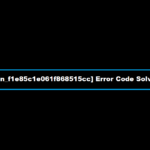What strategies exist for securing Web applications?
Traditionally, when we think of information technology security, we think of network or operating system security. However, as the trend toward web-based applications continues, greater emphasis is being placed on “cybersecurity,” a phrase we’ve been familiar with since the early 1990s and the inception of the web.
Web apps have become an integral part of business and daily life in the modern day. By utilizing web applications, organizations and individuals may streamline their processes and do more with fewer resources, attaining goals more faster than they did previously. They no longer require a warehouse brimming with impeccably ordered paperwork. There is little or no reason to rely on physical mail for communication any longer. Many Web Development companies in India have gained expertise in developing secure , robust and scalable website ,
The majority of marketing activities are now heavily concentrated on the web. Even customer support now directs you to websites rather than 1-800 lines.
Web apps can assist in targeting an ever-growing consumer and consumer base in ways that were previously unattainable. Web apps can communicate with your customers, provide product support, and retain their business.
Because we use web applications for so many various purposes and exchange so much sensitive information across so many various types of online channels, we should be obligated to take a strong stand on protecting and securing that information as well.
To far, no online technology has established its invulnerability beyond a reasonable doubt. Each day, new threats emerge that necessitate at least some adjustment or enhancement in the way countermeasures and general web-based security are implemented. Hire WordPress Developers who should adhere to these standards to improve the overall quality of web apps.
Top 10 suggestions that developers should use to secure the websites:
1. Maintain Security Throughout the Web Application Development Process
Before you hire a team of security consultants, keep in mind that you can maintain security in your web apps while they are being developed.
2. Sustain Vigilance: Require Injection and Input Validation (User Input Is Not Your Friend)
As a general rule, consider any input hostile until proven otherwise. Input validation ensures that only properly formatted data travels through a web application’s process. This prevents bad or possibly corrupted data from being processed, hence preventing downstream components from malfunctioning.
The following are some examples of input validation:
Validation of data types (ensures that parameters are of the correct type: numeric, text, et cetera).
Validation of data format (ensures data meets the proper format guidelines for schemas such as JSON or XML).
Validation of data values (ensures parameters meet expectations for accepted value ranges or lengths).
There is much more to input validation and injection avoidance, but the critical point to remember is that you want to validate inputs both syntactically and semantically. Syntactic validation should ensure that information (SSN, birth date, currency, or full numbers) has the correct syntax, but semantic validation should ensure that their values are right within a very specific business context (end date is greater than the start date, low price is less than high price).
3. Secure your data
Encryption is the fundamental technique of encrypting data in order to safeguard it from unauthorized access. While encryption does not prevent interception during data transmission, it obscures the understandable content for those who are not allowed to access it.
Not only is encryption the most frequently used method of securing sensitive information in transit, but it can also be used to secure data “at rest,” such as data saved in databases or other storage devices.
When utilizing Web Services and APIs, you need not only provide an authentication strategy for the entities who access them, but also encrypt the data transmitted between those services. A publicly accessible, unencrypted web service is a hacker’s best friend (and they have shown increasingly smarter algorithms that can find these services rather painlessly). A network that is open and unprotected is a hacker’s best friend.
4. Take Advantage of Exception Management
Another security precaution that is development-centric is proper exception management. In the event of a failure, you would never want to display anything more than a generic error message. Including the actual system messages verbatim has no purpose for the end user, but serves as vital information for potentially hostile entities. Consider the following when developing: From a security aspect, there are often only three conceivable outcomes:
Typically, you will revert to rejecting the operation in the event of an exception or error. A secure application will prevent operations from being allowed unintentionally. For instance, if an ATM fails, you’d like that it display a straightforward, polite message to the consumer (not spill money out onto the ground).
5. Authentication, role management, and access control are all implemented.
When developing a web application, implementing good account management methods such as strong password enforcement, secure password recovery systems, and multi-factor authentication are all critical. You can even require users to re-authenticate when accessing more sensitive functions.
When developing a web application, one of the most fundamental goals should be to grant each user as few capabilities as feasible in order to obtain what they require from the system. By adhering to this principle of least privilege, you significantly limit the likelihood of an intruder doing operations that could crash the program or, in some situations, the entire platform (thus adversely affecting other applications running on that same platform or system).
Additional authentication and access control concerns include password expiration, account lock-outs, and, of course, SSL to prevent passwords and other account-related information from being transmitted in plain text.
6. Never Underestimate the Importance of Hosting/Service-Oriented Measures
As critical as development-oriented security procedures, good configuration management at the service level is required to ensure the security of your web applications. Is your website at risk? Read about how the LRS web solutions team resurrected and protected the Macon County Circuit Clerk’s website following a hacking attack.
7. Prevent Security Configuration Errors
Given the plethora of possibilities provided by contemporary web server management software, this also implies that there are plethora of opportunities to truly muck things up:
- Leaving files/directories unprotected from being served
- Not deleting the webserver’s default, temporary, or guest accounts
- Leaving ports open on the webserver indefinitely
- Utilization of out-of-date/defunct software libraries
- Utilization of out-of-date security protocols
- Allowing for the expiration of digital certificates
Have a well-documented procedure for not only creating new websites, but also for configuring the web servers and software used to deliver them.
The modular design of web server functionality enables finer control over resource management and security. However, if you are not careful when employing them, this can make your apps less secure. Exercise extra caution and caution while administering more risky security settings and features.
8.Utilize HTTPS (and Redirect All HTTP Traffic to HTTPS)
We have previously explored encryption in terms of development-oriented techniques. Encryption at the service level is also a highly beneficial (and occasionally essential) prophylactic tool to preserve information. This is often accomplished through the use of HTTPS (SSL or Secure Sockets Layer).
SSL is a technology that enables an encrypted connection to be established between a web server and a browser. This preserves the privacy of data sent between the browser and the webserver. SSL is the industry standard for securing online transactions and is used by millions of websites.
Additionally, blanket SSL usage is recommended not only to safeguard your entire website, but also because several issues can arise when resources such as stylesheets, JavaScript, or other files are not referenced via HTTPS over an SSL.
9.Auditing and logging are included.
Additionally, we are concerned about server-level auditing and logging. Fortunately, much of this is embedded into content-serving software tools such as IIS (Internet Information Services) and is easily available if you need to check various activity-related statistics.
Not only are logs frequently the only evidence of suspicious activity, but they also serve as a means of individual accountability by tracking a user’s behaviour.
In comparison to error logging, activity or audit logging should require very little configuration, as it is typically incorporated into the webserver software. Utilize it to identify suspicious activity, track end user behaviour, and evaluate program problems that were not discovered at the code level.
10.Utilize Strict Quality Control and Testing
Utilizing a third-party firm that specializes in penetration testing or vulnerability scanning in addition to your own testing efforts is a terrific option if your scenario permits. Numerous these specialist services are really reasonably priced.
You can also use special tools to help make your site more secure. For example, one such tool is Url Fuzzer by Sitechecker. This tool will analyze all directories and hidden files on your site.
When possible, it is preferable to be excessively cautious and not rely solely on your in-house quality assurance procedure to identify every single flaw in every single online service you use. Adding another layer of testing to uncover a few flaws that were missed by other methods of testing is never a negative thing.













